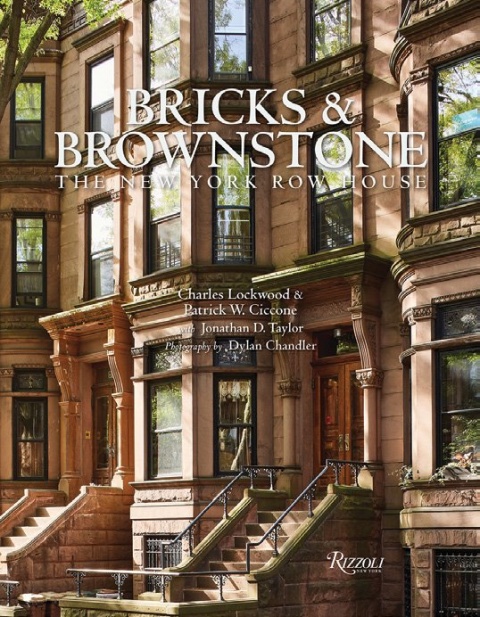Columbia College | Columbia University in the City of New York
A Renovated “Brownstone Bible”

If you can’t stroll these streets yourself, a sumptuous volume makes for a lovely escapist fantasy. The third edition of Bricks & Brownstone: The New York Row House (Rizzoli, $85), known to its legion of fans as “The Brownstone Bible,” has recently been updated by Patrick W. Ciccone ’03, GSAPP’08, a historic preservationist and real estate development advisor.
Ciccone had big shoes to fill: The seminal first edition, published in 1972 by architectural historian Charles Lockwood when he was just 24, helped to renew interest in the 19th-century row houses that now define the landscape in historic New York City neighbor- hoods. Rizzoli published an expanded edition in 2003. Ciccone, along with preservationist Jonathan D. Taylor GSAPP’13 and photographer Dylan Chandler, has modernized the latest edition with revised text, reconfigured chapters and specially commissioned color photography and design.

In 2008, Ciccone and Lockwood made plans to work together on a new edition of Bricks & Brownstone, but the recession hit and the plans were shelved. Ciccone worked for a year on Lockwood and his brother John Lockwood’s book The Siege of Washington: The Untold Story of the Twelve Days at Shook the Union (2011), then reconsidered the Bricks & Brownstone update. But by that time Lockwood was too ill to proceed, and he passed the mantle to his colleague.
Lockwood died in 2012. “Charles wanted the book to live on, and was generous enough to allow me to take over and shape it as I saw fit,” Ciccone says.
As a preservationist, Ciccone was excited to take on the massive project. “My interest in architecture has been how buildings come together to form cityscapes, and row houses are a great example of that,” he says. “I think that ‘average’ buildings — brownstones, apartment buildings, tenements — form cities in a way that ‘great’ buildings often don’t.”
Bricks & Brownstone needed to evolve, because the brownstones themselves have. In the 19th century, brownstones housed single families; when they fell out of favor for high-rise apartment buildings, they were easily divided up into apartments. But in the past few decades, the pendulum has swung again in the other direction, with many brownstones housing higher-income single families. “In being so simple, row houses have proven to be very adaptable,” Ciccone says.
A major change from the earlier editions is the photography. The 2003 edition included some new color photos as an insert; after Ciccone started working with photographer Chandler, they realized they had to re-shoot everything. “I scouted most of the locations on my bike over a couple of years, in historic districts in Manhattan and Brooklyn,” he says. “Then I let Dylan loose with notes and addresses.” Getting shots of houses without cars in front was a significant challenge, with only a narrow window of time that Chandler could shoot them — especially the wide shots — successfully. “In a way, the whole book is an essay about compliance with alternate-side parking,” Ciccone laughs.
“I want readers to be forced to see the city only as houses — without other types of buildings, so slightly abstracted,” he says. “I want people to be shocked by how beautiful and amazingly diverse row house streetscapes are.”
But for Ciccone, the main challenge of Bricks & Brownstone was creating something that would both honor Lockwood’s memory and satisfy loyal fans of the earlier editions. “The book has such a giant reputation that it was almost frightening,” he says.
“In some ways, this has been like the ultimate preservation project,” Ciccone muses. “You have an existing classic with great bones, but it’s in need of work and revamping. It’s really a work of historic preservation in book form.”
Issue Contents
Published three times a year by Columbia College for alumni, students, faculty, parents and friends.
Columbia Alumni Center
622 W. 113th St., MC 4530, 6th Fl.
New York, NY 10025
212-851-7852
cct@columbia.edu
Columbia Alumni Center
622 W. 113th St., MC 4530, 4th Fl.
New York, NY 10025
212-851-7488
ccalumni@columbia.edu

